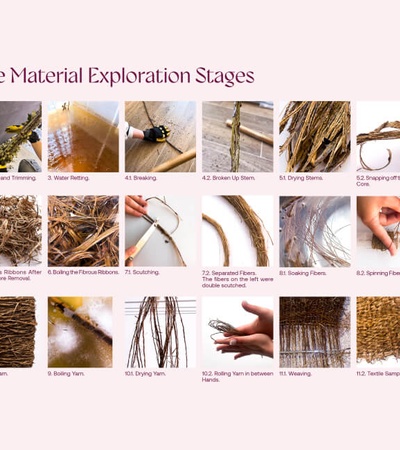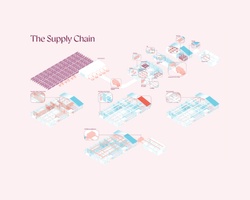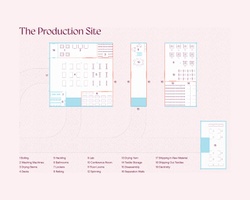
- Home
- Student Projects
- Reimagining The Textile Industry: Embracing The Diversity Of Native Plant Fibers
Reimagining the Textile Industry: Embracing the Diversity of Native Plant Fibers
“Reimagining the Textile Industry: Embracing the Diversity of Native Plant Fibers,” addresses the unsustainable nature of the current textile industry emphasizing its environmental and socio-humanistic challenges. The global preference for certain fibers, like cotton, has led to their forced cultivation in non-native environments, therefore requiring the need for excessive irrigation, fertilizer, and pesticide usages.
Furthermore, production often takes place in underdeveloped countries where regulations on human rights can lead to exploitative practices such as forced labor. This project advocates for a broader use of diverse fibers native to specific regions and promotes localizing their production processes nearer to the source of these raw materials.
Through the application of experimental processes and phases, this project dedicates significant attention to the positive ecological impact of natural and local fiber processing, ultimately proposing cultivation and processing methods which bolster environmental integrity and responsibility.
This proximity throughout the supply chain—from raw material acquisition to garment production and sale—adds another unique layer to the garment from the view of both consumers and manufacturers, linking farmers, manufacturers, and consumers to their regional heritage.
By fostering a local supply chain, the project not only maintains ecological balance but also enables a sustainable cultural practice within textile manufacturing. While the paper focuses on a particular example of blackberry fiber, extensively cultivated in Portugal, it serves as a model that can be replicated globally with other native fibers, potentially leading to a more integrated and responsible textile industry.



